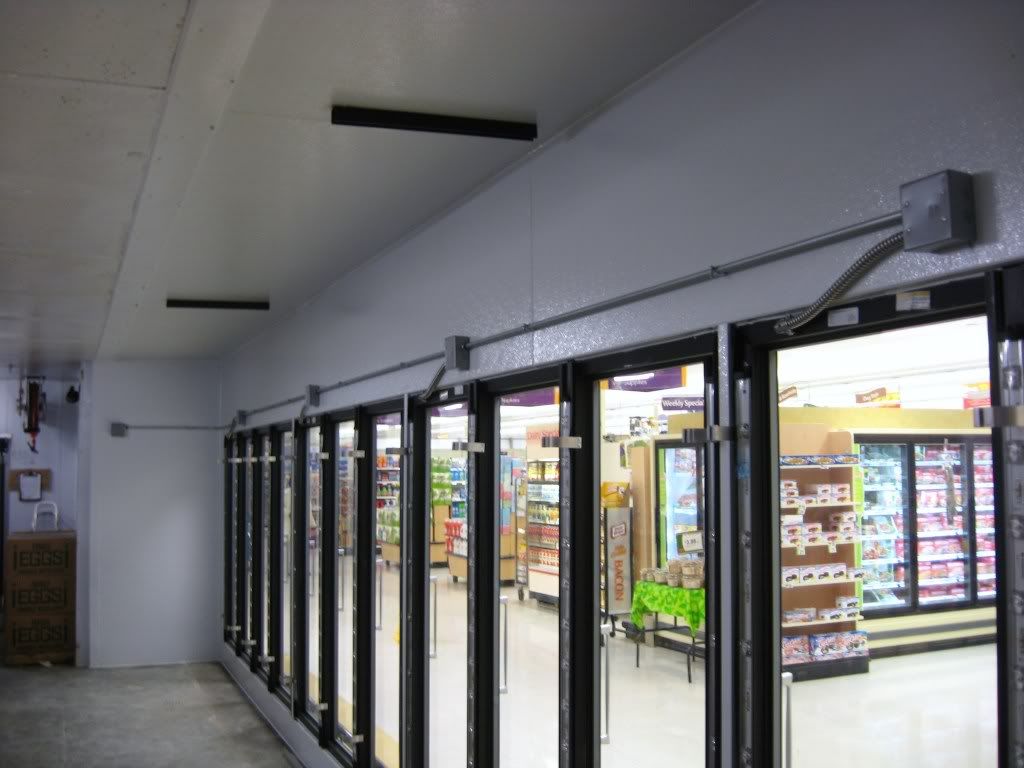Not all coolers are created alike! Here's a classic case of where you need to know more than the NEC. Mainly, you need to be on the same page as the Health inspector.
First, you have a basic design choice to make: wiring inside the cooler, or outside. On balance, you're usually best served by having as little inside the cooler as possible; just be sure to seal your penetrations thoroughly, on both sides of the wall.
You'll need penetrations for the light, the refrigeration equipment, and -maybe- the thermostat.
Inside the cooler you have two issues: clearance and cleaning.
Clearance: Anything in the cooler will interfere with moving stock around. Your mounting hardware can also damage the product. Try to run your stuff up high.
Cleaning: Depending on what the cooler is for, you may be required to stand everything off the walls for cleaning. The Health guy might accept mineralacs, or you might need to get some 1-1/2" plastic stand-offs from a plumbing house.
I use Bell boxes, and mount them flat to the cooler. Depending on the cooler, I might just use ordinary stainless cover plates, or I might use weatherproof ones.
It's not just about the Bell boxes being 'waterproof.' Rather, it's about the boxes having a nice, smooth outside that won't collect crud over time.
If you can, place your GFCI's and switches outside the cooler. I try to have some sort of visual indication that the light is on inside the cooler- a 'pilot light' switch can serve.
I always use compression connectors, though not the special 'rain tight' ones. Again, it's more because I don't want the set screw heads tearing up the product.

